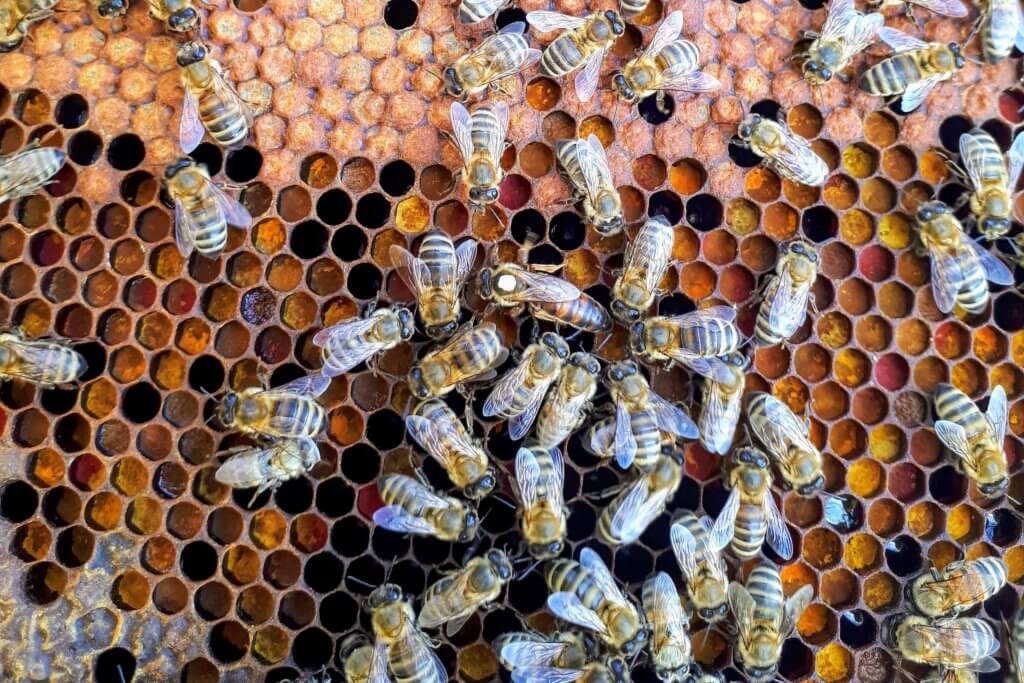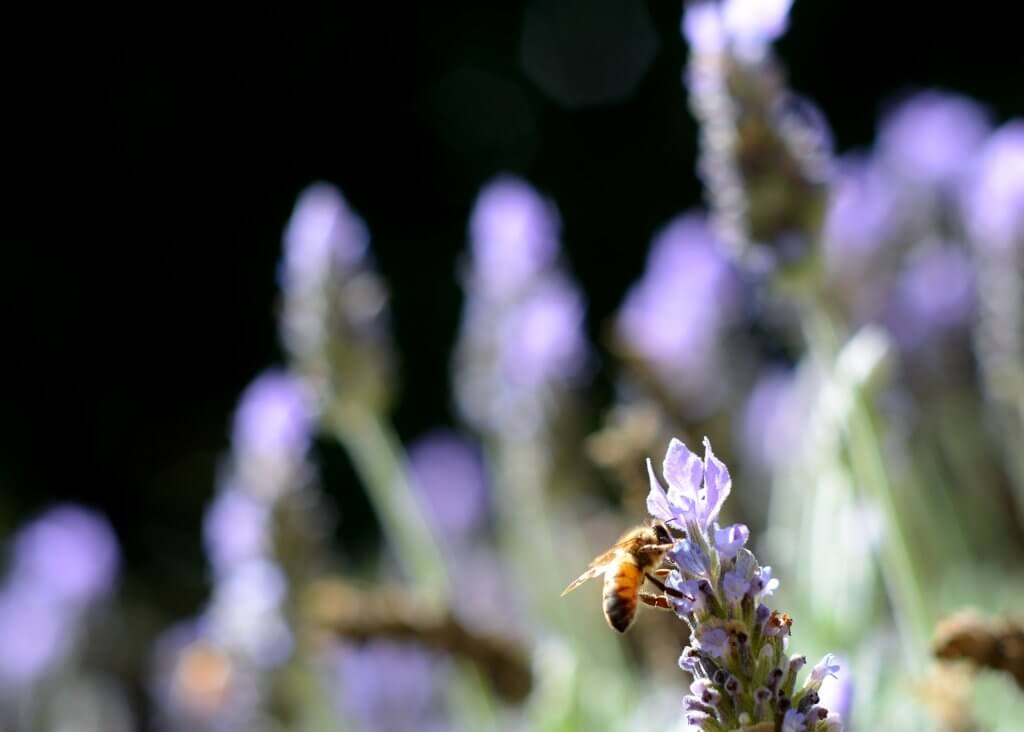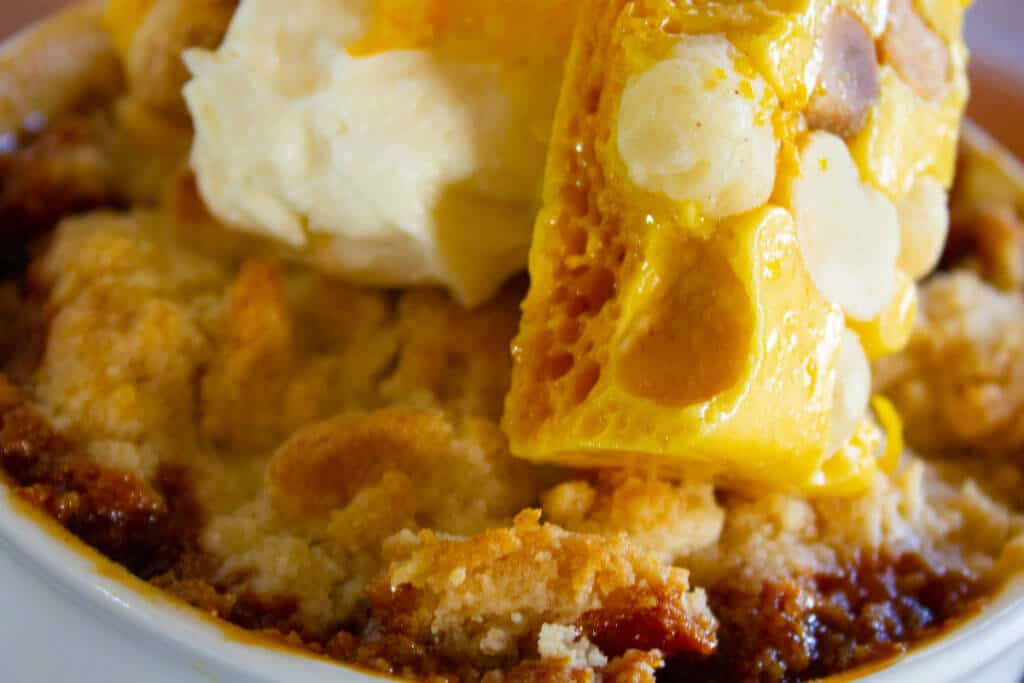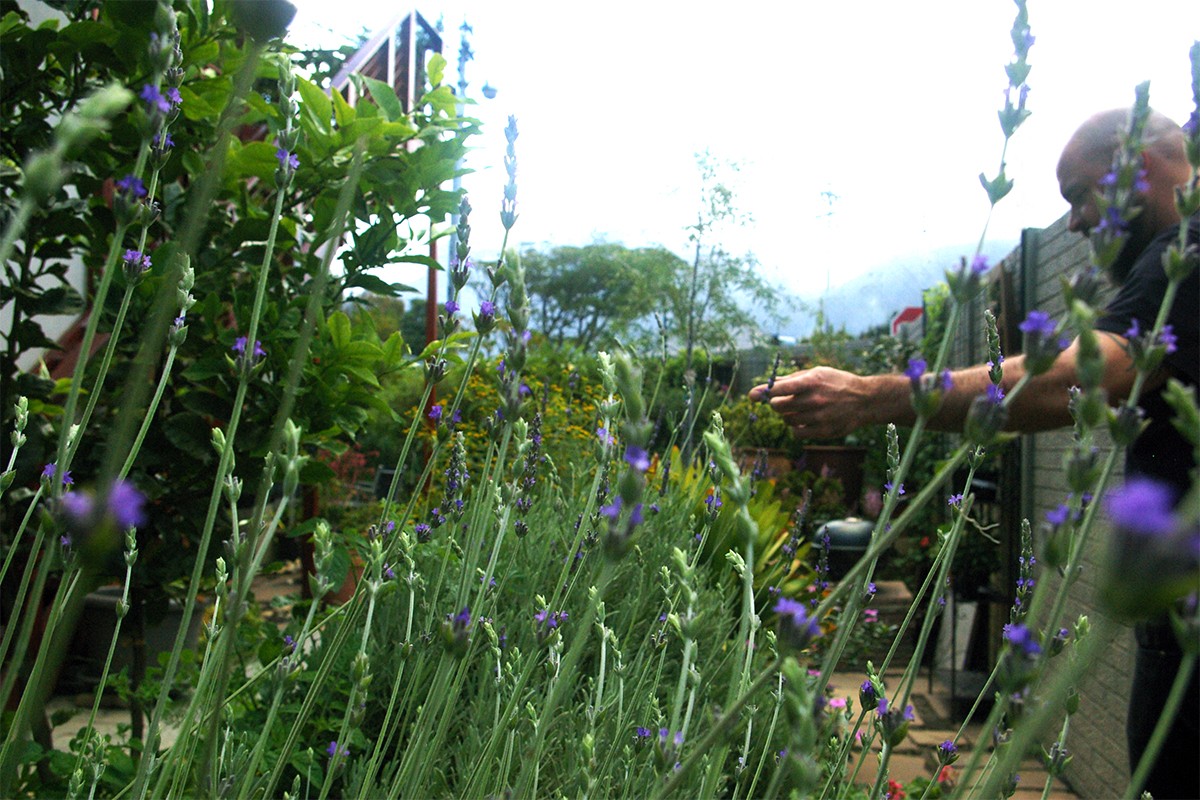33% of all agricultural practices on earth are reliant on the pollination of bees. In an industry of about a billion people, the toil of bees directly affects over 300 million jobs. Let that sink in. This fact alone makes us super keen to get on board with any bee-friendly initiatives that we possibly can.

By housing bee-attracting plants and other creature-inviting elements in the garden, you are nurturing and cultivating an environment that supports biodiversity in the long term. If you missed our BEE-autiful bee blog back in May, we discuss Ten Honey Facts To Sweeten Your Day and in truth, plenty of these facts double neatly as direct benefits to us, the final consumer. So how do we get bees into our gardens in the first place?
- How do I attract bees into my garden?
- Sebastian Vettel’s Bee Hotels
- Bee-come part of the solution
- How to make our honeycomb nut brittle apple crumble
How do I attract bees into my garden?
Bees use scent to find flowers from afar, so choosing sweetly scented, nectar-rich plants will help your cause. They only see the colour of plants when they get closer to them but when they do, bees are attracted to blue, yellow, white, purple and violet flowers with violet being their ultimate fave. Some flowers have nectar guides that are only visible in ultraviolet light. Because bees can see ultraviolet light, these guides act as markers of a sure source of food and bees will choose these flowers above all others. So do bees like lavender? You bet they do.

It is more beneficial to plant a variety of flowers in larger groups of similar flowers, if possible, rather than one or two spaced apart. Bees need nectar (its high sugar content provides the energy they need for their industrious ways), pollen (a source of protein & fats) & freshwater, which can be provided in a shallow pond or birdbath. Bee-attracting herbs include rosemary, mint, thyme & lavender so keep that in mind.
Sebastian Vettel opens a hotel…for bees
One of the best ways to mobilize support for a good cause is when an influential figure gets behind it. Bees have been receiving much-deserved support in mainstream pop culture for a while now, and F1 legend Sebastian Vettel is the latest “influencer” to throw his hat into the ring by supporting bees and the biodiversity they create. The four-time World Drivers’ Championship winner was recently in the news with unlikely but wholesome headlines reading “Sebastian Vettel opens a bee hotel.”
So what’s the big idea behind it?
Vettel has often voiced his passion for green projects in the past and is active in Frutura’s BioBienenApfel society initiative, which serves to create new habitats for bees. One key cog of that process is the construction of bee hotels. Vettel, along with local school kids near the Red Bull Ring in Austria, decided to build a bee hotel close to the circuit in the shape of a Formula 1 racing car.
“This morning was very exciting because I was out close to the track on a field and we installed a racing car – but a very unconventional racing car because it is a hotel for insects and bees,” said Vettel.
“I had a group of kids with me to build up the racing car. The idea behind it is to build up a little more space for insects, and in particular, bees, to have more space where they can flourish and live. Hopefully, there will be a lot of flowers growing in the future and a lot of bees coming to their new home – it will be free of charge!”
Bee-come part of the solution
Anyone can become part of Seb Vettel’s movement at any time. You can register with your newly-created beehive for the project and become part of the habitat procurement of bees. Follow BioBienenApfel on Instagram and/or Facebook and get behind the cause. Further afield, there are numerous prominent global organizations helping to save the bees, including the Elephant and Bees Project in Kenya.
“The Elephant & Bees Project uses beehive fences – a natural deterrent of elephants – to keep elephants off of farmland, reducing crop damage. This not only increases protected habitats for bees but also helps educate farmers on the relationship between bees and crop health. The project supports increased bee populations and works in multiple countries throughout Africa.”
via ecowatch.com
Honeycomb nut brittle
If you’re tired of bee puns then that’s good, because so are we. On an unrelated note, and in case you missed our apple crumble with orange creamed goats cheese & honeycomb nut brittle recipe (what a mouthful) that we shared back in June, here it is again. Just look at it.

In the meantime and before you attempt this delicious recipe, keep supporting local honey producers and biodiversity initiatives whenever you can and where possible, invite bees into your home by making your gardens hospitable and attractive places for nature’s busiest heroes.

